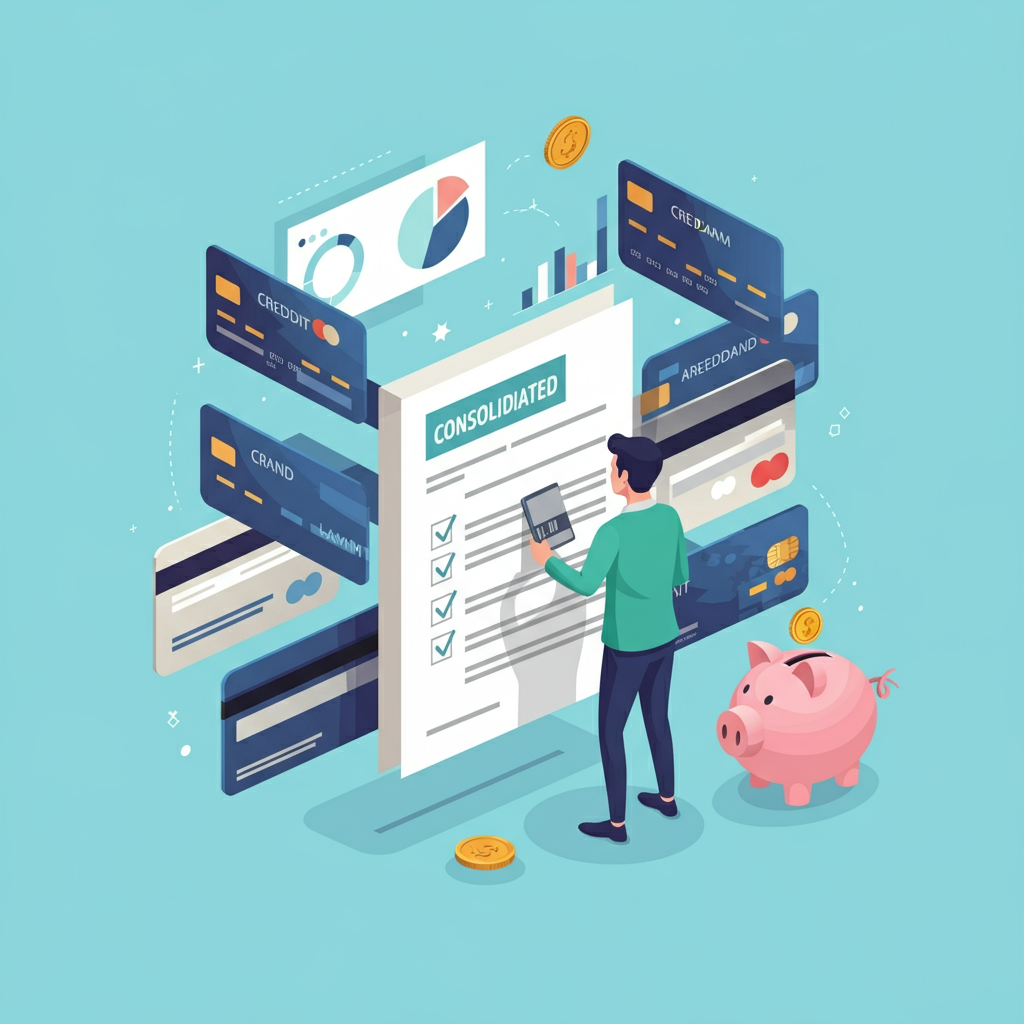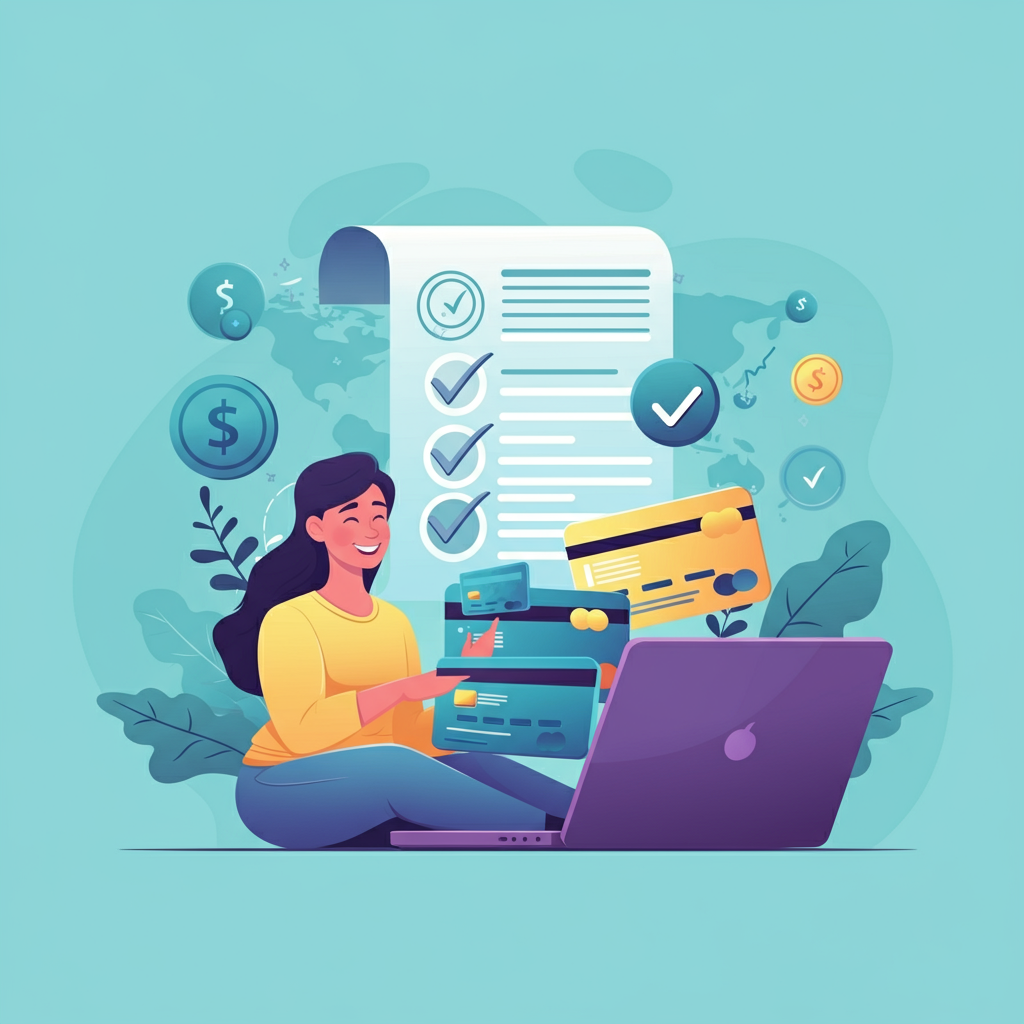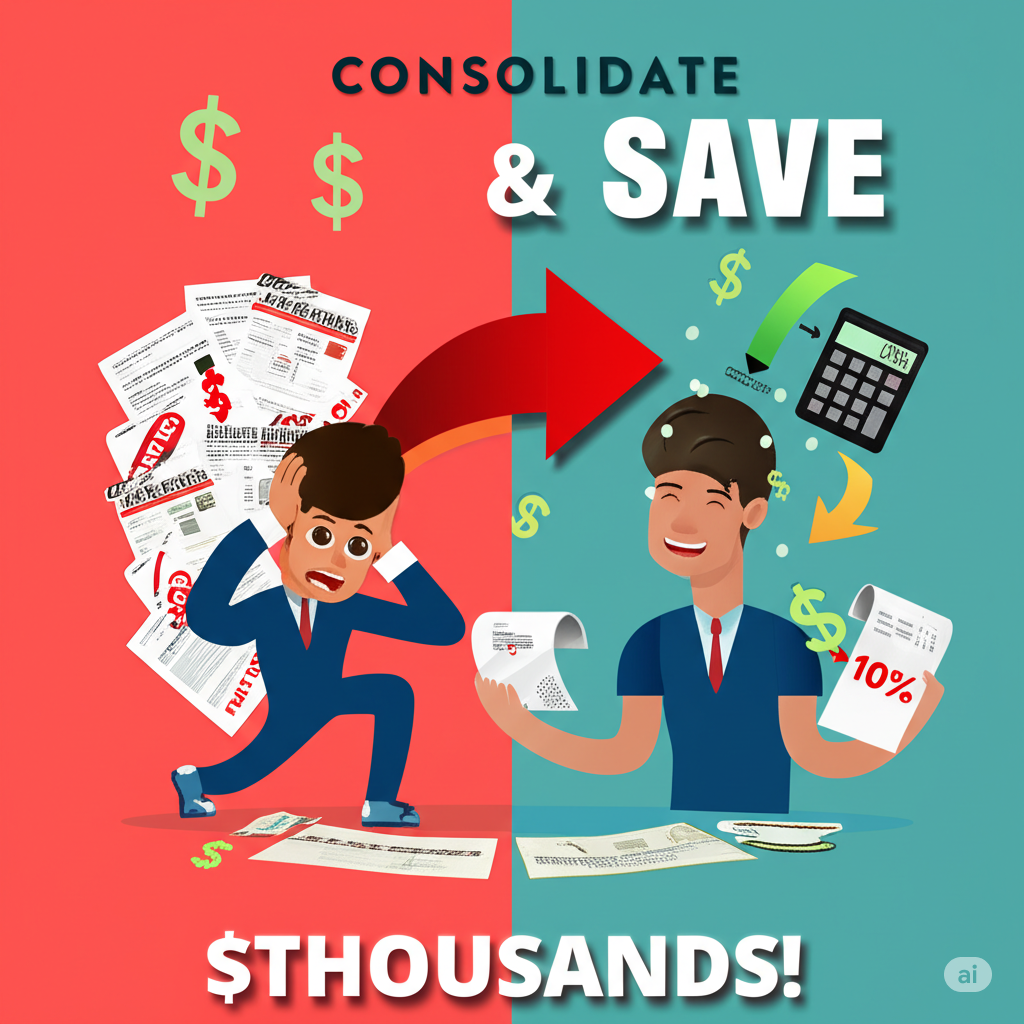Credit card debt can feel overwhelming, but with the right strategies, you can regain control of your finances and become debt-free.
This guide walks you through six actionable steps to tackle credit card debt effectively. By following these steps, you’ll not only reduce your debt but also create a solid financial foundation for the future.
Table of Contents
Understanding the Credit Card Debt Landscape
Credit card debt is one of the most common types of consumer debt, with millions of people struggling to balance high-interest rates and monthly payments. According to recent statistics, the average credit card balance in the U.S. is over $5,000 per household, and interest rates often exceed 20%.
If this sounds familiar, it’s important to remember that you’re not alone. Taking control of credit card debt is possible with a clear plan and disciplined approach. Here’s how to get started.
Step 1: Assess Your Current Credit Card Debt Situation
The first step in tackling credit card debt is to understand exactly what you’re up against. This means gathering all the necessary information about your credit cards and creating a complete picture of your financial situation.
What to Do
- List Out Your Debts:
Write down all your credit cards, their balances, interest rates, and minimum payments. Organize this information in a document or spreadsheet to keep it accessible and up to date. - Check Your Credit Report:
Request a free copy of your credit report from annualcreditreport.com. This will help you identify any potential errors that could be impacting your credit score or financial standing. - Calculate Your Debt-to-Income Ratio (DTI):
Divide your total monthly debt payments by your gross monthly income. This number will give you a sense of how manageable your debt is and help you set realistic repayment goals.
Step 2: Create a Realistic Budget
A practical budget is key to managing your finances and freeing up money to pay down debt. Your budget should reflect your income, expenses, and savings goals.
How to Build Your Budget
- Track Spending:
Use a budgeting app or spreadsheet to analyze where your money is going each month. Look for areas where you can cut back, such as dining out, subscriptions, or entertainment. - Prioritize Needs Over Wants:
Allocate funds to essential expenses, including rent, utilities, and minimum debt payments, before considering discretionary spending. - Set Aside Money for Debt Repayment:
Designate a specific portion of your income for paying off your credit card debt. Even a small amount can make a big difference over time.
Step 3: Explore Debt Repayment Strategies
There are two popular approaches to paying off credit card debt, and choosing the right one depends on your financial situation and preferences.
Debt Snowball Method
- Focus on paying off your smallest balances first, regardless of interest rates.
- Make minimum payments on all other balances.
- Once a small debt is paid off, roll that payment amount into the next smallest debt.
- This method provides quick wins and motivation.
Debt Avalanche Method
- Prioritize paying off debts with the highest interest rates first.
- Make minimum payments on all other balances.
- Once the highest-interest debt is paid, move to the next highest-rate balance.
- This method saves the most money on interest in the long run.
Both strategies are effective, so choose the one that motivates you to stay consistent.
Step 4: Negotiate with Credit Card Companies
Many people don’t realize that credit card companies are often open to negotiation. A simple phone call could result in reduced interest rates, waived fees, or more manageable payment terms.
How to Negotiate
- Prepare Your Case:
Explain your financial situation and demonstrate your commitment to paying your debt. Be polite but assertive. - Ask for Lower Interest Rates:
If you’ve been a loyal customer with a solid repayment history, mention this when requesting a rate reduction. - Request a Hardship Plan:
Some credit card issuers offer hardship programs that temporarily reduce monthly payments or interest rates for customers facing financial difficulties.
Step 5: Consider Debt Consolidation or Balance Transfers
If you’re juggling multiple credit card payments, consolidating your debt or transferring balances to a low-interest card could simplify the process and save money on interest.
Debt Consolidation
- Take out a personal loan to pay off all your credit card balances, leaving you with a single monthly payment at a lower interest rate.
- Look for reputable lenders with fixed-rate options and transparent terms.
Balance Transfers
- Apply for a credit card with a 0% introductory APR on balance transfers.
- Transfer your existing high-interest balances to the new card.
- Pay off the balance before the promotional period ends to avoid accruing interest.
Both options require careful planning and discipline to ensure they’re used effectively.
Step 6: Avoid Accumulating More Debt
The final step in your debt repayment journey is to prevent new debt from accumulating. This will ensure you make sustainable progress toward financial freedom.
Tips to Avoid New Debt
- Stick to Your Budget:
Continue tracking your expenses and adjusting your spending habits as needed. - Limit Credit Card Use:
Use credit cards only for planned, essential purchases that you can pay off immediately. - Build an Emergency Fund:
Save at least 3-6 months’ worth of living expenses to cover unexpected costs without relying on credit.
What is the fastest way to pay off credit card debt?
Paying off credit card debt efficiently requires a clear strategy. Below, we outline two proven methods to help you tackle debt with precision and focus.
1. Use the Debt Avalanche Method
The debt avalanche method minimizes interest payments over time by targeting high-interest debts first. Follow these steps:
- Identify all your credit card debts and note their interest rates.
- Make minimum payments on all debts to avoid penalties.
- Allocate any extra funds to the debt with the highest interest rate until it is fully paid.
- Once the highest-interest debt is paid off, move on to the next highest, repeating the process.
2. Try the Debt Snowball Method
This approach focuses on paying off the smallest debts first, which can provide quick wins and build motivation. Here’s how to apply it:
- List all your debts by balance amount, from smallest to largest.
- Make minimum payments on all debts to stay current.
- Direct any extra funds to the smallest debt until it is paid off.
- Once the smallest debt is cleared, move to the next smallest, continuing the pattern.
Key Points to Remember
- Both methods require consistent minimum payments on all other debts while focusing on one target debt at a time.
- The debt avalanche method saves more on interest, but the debt snowball method can be more motivating for some individuals.
Choose the method that aligns with your financial goals and personal preferences. Staying disciplined and following a structured plan will help you pay off debt faster and more effectively.
How to Effectively Pay Off a Credit Card
Paying off credit card debt requires a clear, structured plan. The goal is to reduce debt efficiently by prioritizing payments and minimizing interest. Below are detailed steps to help you achieve this:
Step 1: Pay More Than the Minimum
Always aim to pay more than the minimum balance on your credit card. This reduces the overall interest you accumulate and shortens the repayment period.
Step 2: Choose a Payment Strategy
Select a repayment method that aligns with your financial situation and goals. Two widely used strategies are:
- Snowball Method: Focus on paying off cards with the smallest balances first. Once a balance is paid off, redirect that payment amount to the next smallest balance. This method boosts motivation by delivering quick wins.
- Avalanche Method: Prioritize paying off cards with the highest interest rates first. This approach minimizes the total interest paid over time, making it the most cost-effective method.
Step 3: Stick to Your Plan
Consistency is key. Whichever method you choose, commit to it and avoid accumulating additional debt.
By following these steps, you can systematically reduce your credit card debt and gain control over your finances.
How to Pay Off Debt While Living Paycheck to Paycheck
If you’re managing debt on a tight budget, a consolidation loan can be a strategic solution. Here’s how it works and what it can offer:
What is a Consolidation Loan?
A consolidation loan allows you to combine multiple debts into one manageable loan. This loan comes with fixed interest rates and repayment terms, simplifying your financial obligations.
Key Benefits:
- Simplified Payments: Reduces the number of monthly payments by consolidating debts into a single loan.
- Lower Interest Costs: Helps prevent high-interest debt from accumulating further and may lower your overall interest rate.
- Streamlined Finances: Makes it easier to track payments and stay on top of your repayment schedule.
By using a consolidation loan, you can create a more structured and manageable path to becoming debt-free.
Taking Control of Your Financial Future
Paying off credit card debt is no small feat, but with discipline and a well-structured plan, it’s entirely achievable. By assessing your debt, creating a budget, employing repayment strategies, and staying mindful of your spending, you can take charge of your financial future.
If you’re ready to take the first step toward becoming debt-free, start by implementing these strategies today. Remember, small, consistent efforts can lead to major financial improvements over time.



